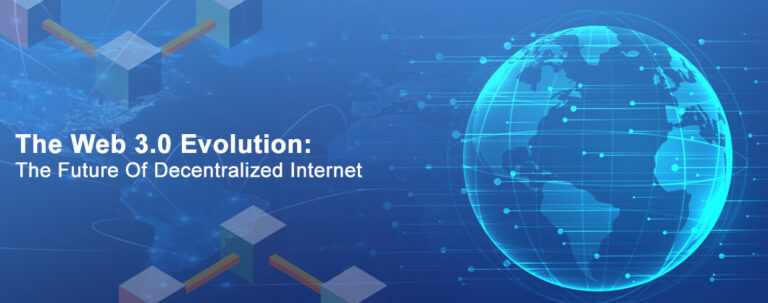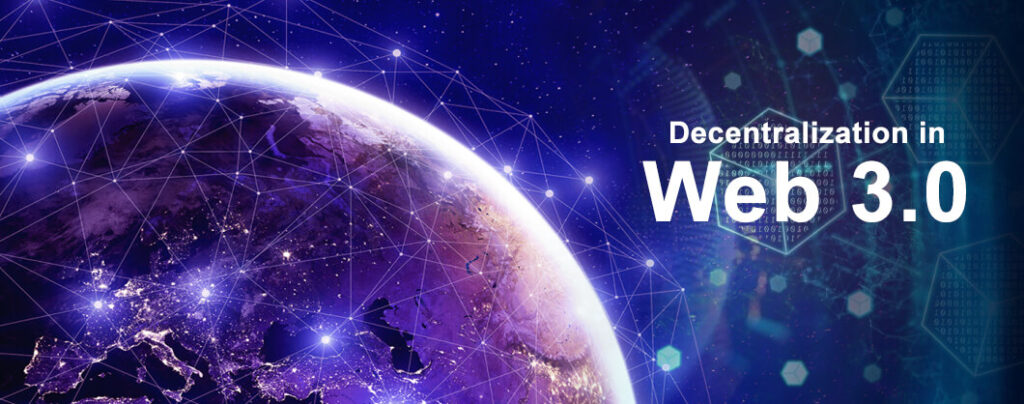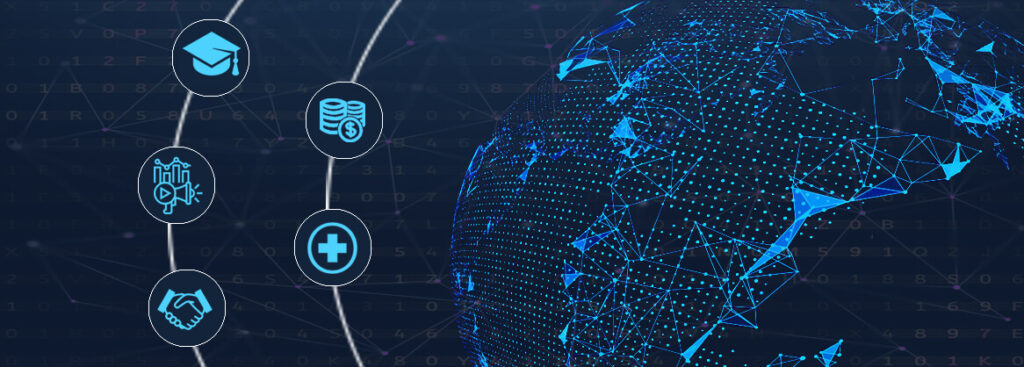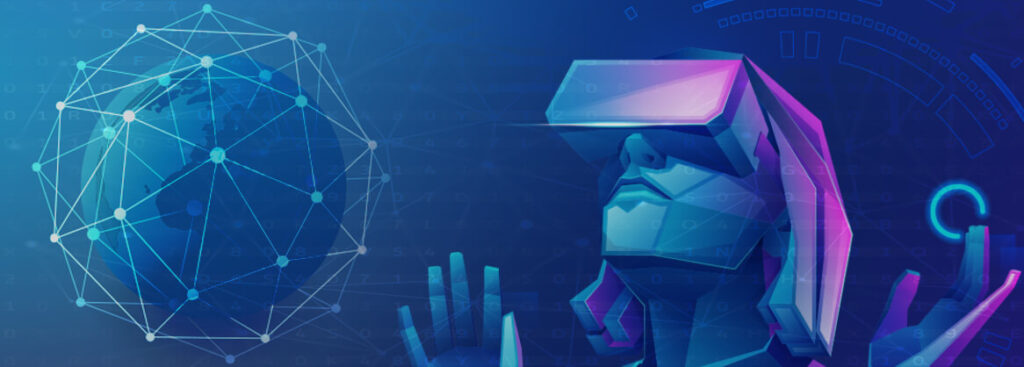
The Web 3.0 Evolution: The Future Of Decentralized Internet
As we stand on the brink of a new era, the term “Web 3.0” is buzzing everywhere for some years now, promising a transformative shift in how we interact with the digital world.
In the early days, the internet was a static network of read-only content, a digital library of sorts. This was Web 1.0, where users were mere consumers of information. Then came Web 2.0, a more dynamic and interactive phase, introducing us to social media, blogs, and user-generated content. It was a significant leap, transforming users into active contributors.
Now, we are transitioning to Web 3.0, often referred to as the semantic or decentralized web. It’s not just an upgrade; it’s a paradigm shift. Web 3.0 aims to create an internet that’s intelligent, context-aware, and tailored to individual user experiences. It’s an internet where users own their data, where information is decentralized, and where digital interactions mirror the complexity and richness of human interactions.
Web 3.0 is characterized by several key features. It leverages artificial intelligence and machine learning to understand and interpret data, making the web more intuitive and personalized. It’s built on blockchain technology, ensuring transparency, security, and user control over personal data. It’s also interoperable, allowing diverse systems and applications to work together seamlessly.
The Technology Behind Web 3.0

The magic lies in its underlying technology. It’s a blend of advanced tech that works together to create a more intelligent, secure, and user-centric web.
At the heart of 3.0 is blockchain technology. Known as the backbone of cryptocurrencies. Blockchain brings decentralization to the web. It’s a distributed ledger that records transactions across multiple computers, ensuring transparency and security. In the new Web, blockchain enables users to have control over their data, eliminating the need for intermediaries.
Cryptocurrencies serve as the native currency of the Web 3.0 ecosystem. They facilitate transactions, incentivize network participation, and can even represent ownership of digital assets. This integration of blockchain and cryptocurrencies in 3.0 paves the way for a more democratic and equitable digital economy.
Web 3.0 is often referred to as the semantic web. It’s an extension of the current web, designed to enable computers to understand and interpret information just like humans do. The semantic web uses metadata and ontologies to give meaning to data, making it easier for machines to process and analyze information.
Artificial intelligence (AI) plays a crucial role in this context as AI and machine learning algorithms can analyze and learn from the vast amount of data on the web, providing personalized content and experiences. They can understand user behaviour, preferences, and needs, making Web 3.0 a more intuitive and user-friendly space.
One of the defining characteristics of Web 3.0 is decentralization. Unlike the current web, where data is controlled by a few tech giants, Web 3.0 aims to distribute data across the network. This decentralization gives users control over their data, enhancing privacy and security.
In Web 3.0, users can decide who can access their data and for what purpose. They can also monetize their data if they choose to. This shift towards user control is a significant step towards a more democratic and user-centric web.
Understanding Decentralization in Web 3.0

In a decentralized system, there is no central authority that controls or manages the operations. Instead, control is distributed among multiple participants or nodes in the network. Compared to the centralized model of Web 2.0, where a few tech giants control most of the web’s data and services.
Decentralization is achieved through blockchain technology ensuring transparency and security. Each node in the network has a copy of the entire blockchain, making it nearly impossible to alter or forge data.
Benefits and Challenges of a Decentralized Web
A decentralized web offers several benefits, Including:
- It enhances privacy and security. Since users control their data, there’s less risk of data breaches and misuse.
- It promotes transparency. With blockchain, all transactions are recorded and visible to all participants, making the web more trustworthy.
- It enables peer-to-peer interactions. Users can interact directly with each other, without the need for intermediaries.
Despite its benefits, a decentralized web also poses challenges, including:
- Scalability is a major issue. As the number of transactions increases, the blockchain network can become slower and less efficient.
- The adoption barrier. For many people, concepts like blockchain and cryptocurrencies are complex and difficult to understand. This can hinder the widespread adoption of Web 3.0.
Web 2.0 vs. Web 3.0: A Comparative Look

The transition from Web 2.0 to Web 3.0 is not merely about advanced technology; it’s about a fundamental shift in how we interact with the Web.
User Experience
In Web 2.0, the user experience is largely dictated by the platform. Websites and applications provide a one-size-fits-all experience, with limited personalization. On the other hand, 3.0 aims to deliver a highly personalized user experience. Leveraging AI and semantic technologies, Web 3.0 can understand user preferences and deliver content that’s tailored to every individual user’s needs.
Data Control and Privacy
Web 2.0 is characterized by centralized data control. Tech giants like Google and Facebook store and control user data, often leading to concerns about privacy and data misuse. Whereas, Web 3.0 emphasizes user control over data. Users can decide who can access their data and for what purpose, enhancing privacy and security.
Applications
Web 2.0 introduced us to social media, blogs, and user-generated content. However, these applications are owned and controlled by centralized entities. 3.0 takes it a step further with decentralized applications (dApps). These are applications that run on a peer-to-peer network, rather than a centralized server. dApps are open-source, transparent, and operate with tokens, offering a whole new range of possibilities for digital interaction.
The Shift from Centralized to Decentralized Web
The most significant difference between a centralized to a decentralized web. In Web 2.0, a few entities control the Internet, leading to issues like data monopolies, privacy breaches, and a lack of transparency. Web 3.0 aims to address these issues envisioning an internet where users are in control, data is decentralized, and digital interactions are transparent and secure.
Web 3.0 Applications and Examples

Web 3.0 is not just a theoretical concept, it’s already shaping our digital world in exciting ways.
Real-World Examples of Web 3.0 Applications:
- Decentralized Finance (DeFi): They leverage blockchain technology to offer financial services like lending, borrowing, and trading without the need for traditional financial intermediaries. Platforms like Uniswap and Compound are leading examples of DeFi applications.
- Decentralized Social Media: Web 3.0 is also transforming social media. Platforms like Minds and Mastodon are decentralized alternatives to traditional social media, giving users control over their data and content.
- Decentralized Marketplaces: Web 3.0 has given rise to decentralized marketplaces like OpenSea, where users can trade digital assets and NFTs (Non-Fungible Tokens). These platforms operate on blockchain, ensuring transparency and security.
Emerging Web 3.0 Startups:
- Filecoin: A decentralized storage network that allows users to rent out their storage space or buy storage space from others. It’s a promising example of how Web 3.0 can disrupt traditional cloud storage services.
- Orchid: A decentralized VPN service that leverages blockchain to ensure privacy and security. Users can buy bandwidth from a global pool of service providers, making the internet more accessible and private.
- Aragon: A platform for creating and managing decentralized organizations. It’s a powerful example of how Web 3.0 can transform governance and organizational structures.
Impact of Web 3.0 on Various Sectors

The transformative potential of Web 3.0 extends far beyond the realm of the Internet. It has the potential to disrupt a wide range of industries, from finance and healthcare to education and beyond.
Financial Sector
DeFi applications are enabling peer-to-peer financial services, eliminating the need for intermediaries like banks. For instance, platforms like Compound allow users to lend and borrow cryptocurrencies directly, offering a more transparent and accessible financial system.
Education Industry
AI can analyze a student’s learning style and adapt content accordingly, while blockchain can secure and verify educational credentials. Platforms like ODEM are using Web 3.0 technologies to create a decentralized education marketplace, where students can directly connect with educators.
Marketing Sector
With its emphasis on data privacy and user control, marketers need to adapt to a landscape where meaningful, consent-based interactions are paramount. Decentralization opens avenues for direct, peer-to-peer marketing, bypassing traditional intermediaries. Blockchain can enhance transparency in digital advertising, preventing ad fraud and ensuring fair compensation. An example is Brave, a privacy-focused browser that offers opt-in ads and rewards users with its native cryptocurrency, Basic Attention Token (BAT), embodying a new, Web 3.0-aligned advertising model.
Healthcare Sector
Web 3.0 can enhance data security, privacy, and interoperability. Patients can have control over their health data, deciding who can access it and for what purpose. This can facilitate better data sharing and collaboration among healthcare providers, leading to improved patient care. Companies like MedRec are leveraging blockchain, a key technology of Web 3.0, to secure patient data and enable better data sharing.
Businesses and Individuals
For businesses, It can offer new ways to engage with customers, enhance transparency, and streamline operations. Companies that leverage 3.0 technologies can gain a competitive edge, offering services that are more secure, personalized, and user-centric.
For individuals, It can transform the way we interact with the digital world. It promises a more democratic internet, where users control their data and digital interactions are more secure and personalized. From finance and healthcare to education and entertainment, 3.0 can enhance various aspects of our digital lives.
Web 3.0 and the Metaverse

In the world of Web 3.0, another concept that’s gaining popularity is the metaverse. Often described as the next iteration of the internet, the metaverse is closely linked with the evolution of 3.0.
The metaverse is a virtual universe that includes multiple interconnected digital spaces. It’s a 3D virtual world where users can interact with each other and the environment in real-time. The metaverse can include everything from virtual reality spaces and augmented reality experiences to video games and social media platforms.
In the metaverse, users can have digital avatars, own virtual assets, and even conduct economic transactions. It’s a digital universe that mirrors the complexity and richness of the physical world.
The Role of Web 3.0 in Shaping the Metaverse
Web 3.0 technologies play a crucial role in shaping the metaverse. Blockchain can enable ownership of virtual assets and facilitate transactions in the metaverse. It can ensure that digital assets are unique, owned by users, and can be traded securely.
Decentralization is also crucial for the metaverse. It can ensure that the metaverse is not controlled by a single entity, but is a shared space where users have control.
AI and semantic technologies can make the metaverse more intelligent and personalized. They can enable context-aware experiences, where the virtual environment adapts to the user’s behaviour and preferences.
It’s clear that we’re on the brink of a new era in digital interaction. Web 3.0, with its advanced technologies and user-centric approach, is set to revolutionize the Internet as we know it.
From the shift from a centralized to a decentralized web, the enhanced user experience, to the transformative impact on various industries, the potential of Web 3.0 is immense. It promises a more democratic, secure, and personalized internet, where users have control over their data and digital interactions.
Web 3.0 is not just the future of the Internet; it’s the future of digital interaction. As we continue to discover this new world, one thing is clear: Web 3.0 is set to reshape our digital lives in ways we can only begin to imagine.

